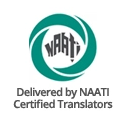
The Sindhi language roots stretch back to the ancient Indus Valley Civilization, which prospered around 3300 BCE. Though the exact details of Sindhi’s origin remain unclear, scholars believe it likely emerged from a blend of languages spoken in the region, including various Middle Indo-Aryan languages. As the language continued to evolve it absorbed influences from Sanskrit, the classical Indo-Aryan language, and later from Arabic and Persian due to cultural and political exchanges.
Sindhi-Speaking Communities Today
The 1947 partition of India undoubtedly reshaped the landscape for the Sindhi community. While the majority of Sindhi speakers stayed in the newly formed Pakistan, particularly in the Sindh province where Sindhi remains the official language, a significant number migrated to India.
This resulted in flourishing Sindhi communities across India, particularly in states like Gujarat, Maharashtra, and Rajasthan. Sindhi is also officially recognized in India’s constitution. Today, there are estimated to be over 32 million Sindhi speakers.
Sindhi Scripts
The Sindhi language utilizes two different writing systems. In Pakistan, most people write Sindhi using a modified version of the Arabic script. This script, like standard Arabic, uses ligatures where letters join together for smoother writing. However, Sindhi has different sounds than Arabic. To bridge this gap, the Sindhi script adds tiny marks called diacritics and extra letters specifically for those sounds.
In India, they write Sindhi using the Devanagari script, which is also used for Hindi. This reflects the historical connection between Sindhi and other languages of North India.
Literary and Cultural Legacy
Sindhi is known for its rich literary tradition spanning centuries. Famous Sindhi poets like Shah Abdul Latif Bhittai and Sachal Sarmast left their mark by writing beautiful poems about love, religion, and social issues. Sindhi folk music is also popular, with captivating melodies and lyrics that resonate with the cultural identity of the Sindhi people.
Preservation and Promotion Efforts
Despite the geographical displacement of Sindhi communities due to the partition, Sindhi continues to thrive in modern world. Two key organizations work on Sindhi’s preservation and promotion. The Sindhi Language Authority, established under the Sindh government in Pakistan, actively fosters Sindhi language and literature. This autonomous body develops and implements policies for teaching Sindhi in schools throughout the province. Additionally, they conduct research, publish materials, and organize events to promote Sindhi usage and appreciation.
In India, the National Council for Promotion of Sindhi Language (NCPSL) plays a vital role. This autonomous body under the Indian Ministry of Education works tirelessly to promote Sindhi. They offer educational resources, organize cultural events, and support research initiatives. Their website serves as a valuable online resource for learning materials and information about Sindhi language and culture.
Beyond these official bodies, Indian non-profit organizations like Sindhi Sangat contribute significantly to preserving and promoting Sindhi language and culture. Their website offers a wealth of resources, including educational programs, online dictionaries and Sindhi script tutorials. They also produce music videos, webcasts, and television programs that showcase Sindhi culture and traditions. Notably, they have organized cultural events in Dubai for over 16 years, featuring renowned Sindhi artists from both India and Pakistan.
With these efforts, it is safe to say that Sindhi will continue to flourish for centuries to come.
Do you need high-quality Sindhi translations but struggle to find a reliable service? TranslateSwift has a dedicated team of Sindhi linguists offering accurate and culturally appropriate translations. Whether you need to translate business contracts, travel documents, or study certificates, Translateswift delivers exceptional results.
Other Languages
- English
- Spanish
- German
- Dutch
- French
- Italian
- Afrikaans
- Albanian
- Amharic
- Arabic
- Armenian
- Azerbaijani
- Basque
- Belarusian
- Bengali
- Bosnian
- Bulgarian
- Cantonese
- Catalan
- Cebuano
- Chichewa
- Chinese - Simplified
- Chinese - Cantonese
- Chinese - Traditional
- Chinese - Mandarin
- Corsican
- Croatian
- Creole
- Czech
- Danish
- Dari
- Esperanto
- Estonian
- Farsi
- Filipino
- Finnish
- Frisian
- Galician
- Georgian
- Greek
- Gujarati
- Haitian Creole
- Hausa
- Hawaiian
- Hebrew
- Hindi
- Hmong
- Hungarian
- Icelandic
- Igbo
- Indonesian
- Irish
- Japanese
- Javanese
- Kannada
- Kazakh
- Khmer
- Korean
- Kurdish
- Kyrgyz
- Lao
- Latin
- Latvian
- Lithuanian
- Luxembourgish
- Macedonian
- Malagasy
- Malay
- Malayalam
- Maltese
- Maori
- Marathi
- Mongolian
- Montenegrin
- Myanmar
- Nepali
- Norwegian
- Odia
- Pashto
- Persian
- Polish
- Portuguese
- Punjabi
- Romanian
- Russian
- Samoan
- Scots Gaelic
- Serbian
- Sesotho
- Shona
- Sindhi
- Sinhala
- Slovak
- Slovenian
- Somali
- Sundanese
- Swahili
- Swedish
- Tajik
- Tagalog
- Tamil
- Telugu
- Thai
- Turkish
- Ukrainian
- Urdu
- Uyghur
- Uzbek
- Vietnamese
- Welsh
- Xhosa
- Yiddish
- Yoruba
- Zulu
